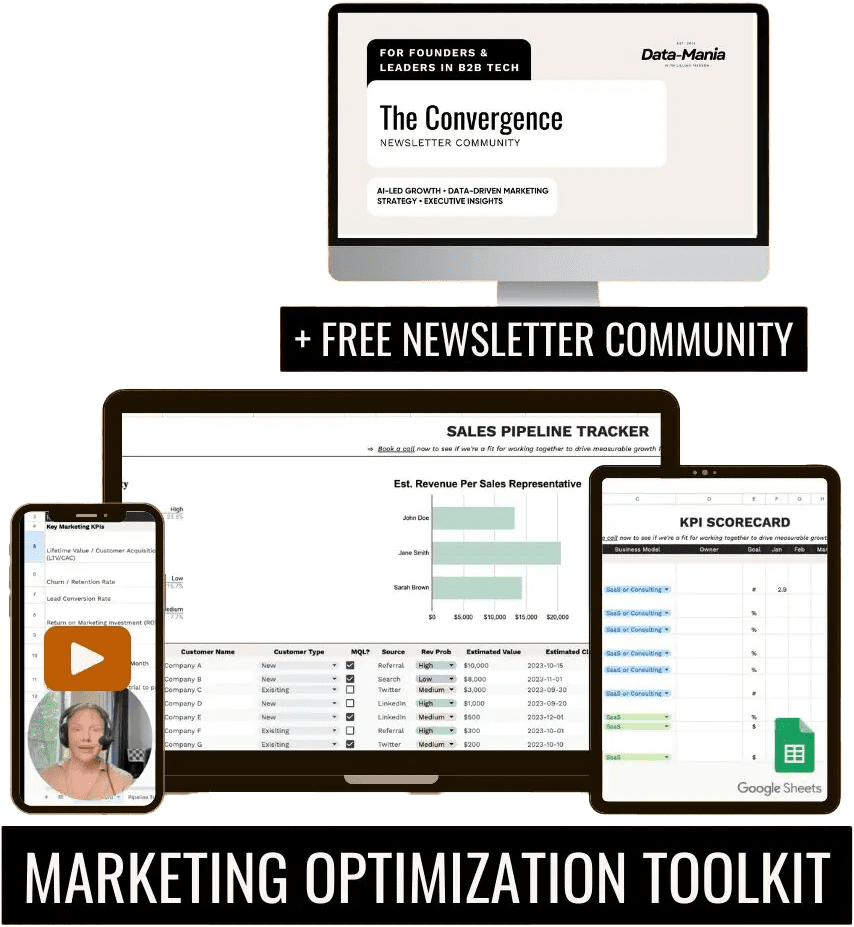Are you intrigued to learn how to build a tech company from scratch? Do you have an innovative concept and want to test its feasibility before taking the entrepreneurial leap? You’ve landed on the right page! This guide will give you essential steps to cement the foundation for your tech company’s triumph even before you assemble your team.

By finishing this article, you’ll uncover the exact tactics that helped secure $500k in seed funding within the first month of the company’s establishment. This case study about how to build a tech company that was originally a vague idea jotted down on a napkin in late 2022 came to life in early 2023. This success story is a testament to our strategy’s power in today’s tech entrepreneurship climate.
So, get ready, budding visionaries! We’re about to explore the indispensable steps to build a thriving tech company. Buckle up! It’s time to launch your dream into the tech entrepreneurship stratosphere!
Conceptualization and Market Research
You are overflowing with innovative concepts and wondering which could become your tech industry jackpot. Welcome to the conceptualization and market research stage, where separating the viable from the unfeasible is crucial. Here, you’ll learn to sort through the flood of ideas and pinpoint the ones with real potential, but you’ll also comprehend the importance of constant tech learning in this process.
The learning curve is ever-present in this digital age, particularly in the tech sector. Knowledge is the driving force that maintains your edge in innovation. Hence, learning resources, priceless for IT professionals, are indispensable. They keep you updated, refine your existing abilities, and assist you in gaining new ones. This unceasing learning process could be the secret to identifying your potentially successful concept amid the noise of numerous ideas.
So, let’s embark on this journey of creativity, where you’ll excel in differentiating valuable ideas and recognize why continuous IT learning can choreograph your tech company’s success.
A. The process of ideation
Efficient ideation combines creativity with practicality. It requires brainstorming, of course, but it also necessitates structured thinking.
Begin by identifying a problem that needs a solution or an enhancement that could be game-changing. Search for gaps in the current market that your product or service could fill. Ensure that your idea aligns with your passion and expertise – the entrepreneurship journey is tough, and your enthusiasm will fuel your drive.
B. Conducting market research
Once you’ve identified your bright idea, it’s time to validate it with thorough market research. This step is crucial – it provides insights into your target audience, their needs, preferences, and your competition.
Understanding your target audience is essential to tailoring your product to their needs. Demographics, psychographics, and buying behaviors – these are vital data points that will help shape your product.
Your goal is not just to enter the market but to make a mark. So, don’t just follow the trends; aim to set new ones. With your viable idea and market knowledge, you’re now set to build your tech startup empire.
How to Build a Tech Company By First Establishing a Solid Business Model
You have your groundbreaking idea and have validated it with rigorous market research. The next key step? Constructing a robust business model to steer your tech startup toward success.
The essential components of a business model for a tech startup include:
- Value Proposition: This defines what unique value your product or service brings to the market and differentiates it from competitors.
- Customer Segments: Identifying your target audience is crucial. Knowing who they are, their needs and preferences, and how you’ll reach them can make or break your startup.
- Channels: These are the mediums through which you deliver your product or service to your customers. It could be an online platform, physical stores, or a combination.
- Revenue Streams: This highlights how your startup will generate income. It could be through sales, subscription fees, licensing, or other means relevant to your product or service.
- Cost Structure: It’s essential to understand and plan for the costs associated with your startup. This could include development costs, marketing expenses, operational costs, etc.
- Key Partnerships: Identifying strategic partnerships can help you access resources, reduce costs, or improve your offering.
- Key Activities: These are the critical operations that need to happen for your value proposition to be created and delivered.
Remember, your business model aims to illustrate how your startup will function and be profitable. It’s a blueprint that will guide your entrepreneurial journey.

Funding Your Tech Startup
It’s time to dive into the often challenging but utterly crucial aspect of startup creation: securing funding. The financial backing you secure will serve as the lifeblood of your early operations, allowing your startup to develop its product, scale operations, and make an impact.
Overview of Common Funding Sources
- Bootstrapping: This is when you fund your startup using your own savings or revenue from the business. While it may limit your initial resources, bootstrapping allows you to retain full control over your startup.
- Angel Investors: These are high-net-worth individuals who typically provide funding in exchange for startup equity. They bring capital and often offer valuable mentorship and networking opportunities.
- Venture Capital: Venture capitalists (VCs) invest in startups and small companies with solid growth potential. VC funding can provide substantial capital, but it often involves giving up a percentage of ownership and control.
Pitching to Investors
- Understanding Investors: Different investors have different expectations. Research your prospective investors to understand their focus areas, investment criteria, and what they look for in a startup.
- Crafting Your Pitch: Your pitch should communicate your value proposition, business model, market opportunity, and the strengths of your team. Ensure also to include a clear plan for how the investment will drive growth.
- Financial Projections: Investors want to see a return on their investment. Prepare realistic financial projections that show potential profitability and a strategy for achieving it.
- Prepare for Due Diligence: If investors are interested, they’ll thoroughly analyze your startup. Be prepared to provide detailed information about your business, including financial records, business plans, and market research.
With secured funding, you can now focus on developing your product. We’ll discuss this next, so don’t stop now – the journey to pioneering a successful tech startup continues!
Developing Your Product and Scaling Your Startup
At the heart of your journey on how to build a tech company, you’ve assembled your team and secured the necessary funding. The platform is primed to breathe life into your product and set strategies for your startup’s expansion. This phase is an exhilarating mix of creativity and foresight. It’s where the magic of conceiving a unique solution meets the strategic planning essential for growth, signaling your readiness to leave a lasting imprint on the tech world.
Importance of Minimum Viable Product (MVP)
In the landscape of tech startups, a Minimum Viable Product (MVP) is your first significant milestone. An MVP is the simplest version of your product, equipped with just enough features to attract early users and gather invaluable feedback for future product development. The MVP strategy allows you to validate your product idea, minimize expenditure, and learn about your users’ preferences before investing more heavily.
Building a Strong Brand and Marketing Strategy
Once your MVP is ready, it’s time to think about how you’re going to put it in front of your target audience. Building a strong brand and marketing strategy are crucial to ensure your startup’s visibility and customer engagement.
- Branding: Your brand should effectively communicate what your startup stands for, its values, and what sets it apart from competitors. It is not just your logo or tagline; it’s the experience that people have with your startup at every touchpoint.
- Marketing Strategy: A well-crafted marketing strategy is vital to getting your product in front of your target customers. This strategy could include SEO, content marketing, social media marketing, paid ads, PR, and more. The best strategy will depend on your business model, target audience, and the resources available.
Understanding When and How to Scale Your Tech Startup
With a viable product and a solid marketing strategy in place, it’s time to think about scaling your startup. Scaling is about capably growing your startup while maintaining or improving operational efficiency.
- When to Scale: Understanding the right time to scale is critical. This decision often depends on factors like consistent and growing demand, solid unit economics, or the readiness of the operations and team to handle growth.
- How to Scale: Scaling can be achieved by expanding your product line, entering new markets, or building strategic partnerships. Regardless of the method, ensure you have the operational robustness and financial resources to support this growth.
Conclusion
Understanding how to build a tech company is intricate, exhilarating, and challenging. Making your tech startup is more than creating a profitable business. It’s about nurturing your innovative ideas, translating them into reality, impacting the industry, and, perhaps, changing the world.
This path encapsulates the essence of how to build a tech company effectively. So, hold onto your entrepreneurial spirit, embrace the journey, and remember – the road to success is always under construction. Now, equipped with the knowledge of how to build a tech company, go forth and pioneer your successful tech startup!
Hey! If you liked this post, I’d really appreciate it if you’d share the love. Click one of the share buttons below!
A Guest Post By…


Rajeev Bera is a tech entrepreneur with a decade of experience in the software industry. As the founder of aCompiler, he uses his expertise to empower IT professionals and inspire innovation.
If you’d like to contribute to the Data-Mania blog community yourself, please drop us a line at communication@data-mania.com.





